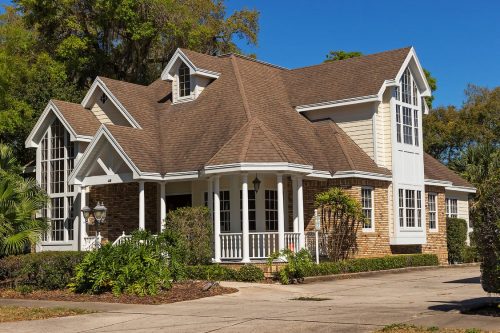Roof Care Tips After Winter
The cold season can cause significant wear and tear on your roof. You might experience leaks, mold, ice dams, sagging, or missing shingles. Prevent these damages by regularly maintaining your roof and fixing any problems as they occur. Roof care tips after the cold season include:
(Image Credit Pexels)
Contents
Thoroughly Inspect The Roof
After the cold season, inspect your roof thoroughly. The exercise will identify any problems that might have occurred during the winter. Look out for cracks, leaks, or any other damage.
The inspection is especially critical after a severe storm. You’ll quickly spot areas that need repair or conclude on an entire roof replacement in case of severe damage. When searching for roof repair Bucks County, PA experts stick to those with high qualifications, reputation, and experience. Doing so assures you of a quality job.
Clean Your Roof and Gutters
The roof and gutters require regular cleaning to remove debris, leaves, or twigs. This practice keeps your roof in good condition and improves its lifespan. Clogged gutters cause water to back up and seep into your home through the roof.
High moisture levels lead to mold growth and wood rot, weakening the structure of your roof. Schedule the exercise for early spring and fall to ensure your roof is clean before the cold and wet seasons.
As you will realize, removing snow as soon as possible avoids ice dams. The effort also keeps the weight off your roof. For an older home with a weaker roof, use trusses to strengthen the roof. The extra support prevents the roof from collapsing under the weight of heavy snow.
Cut Back Trees and Bushes Near Your Home
The winter season weakens the roots of trees around your home. They can fall on your roof and cause severe damage; therefore, cut them to avoid such disasters. Also, trim bushes and other vegetation around your house as they hold moisture close to the foundation. Dont forget to remove tree branches hanging over the roof as they rub against it, causing damage.
Check The Ventilation
Proper ventilation is necessary to reduce heat and moisture in your attic. The effort prolongs the life of your roof by preventing wood rot and mold growth. Ensure debris, snow, or ice do not block vents and clear any obstructions inside the attic.
Replace Damaged Shingles
Severe weather conditions, such as high winds and hailstorms, can damage shingles. Damaged shingles leave your roof vulnerable to leaks. Inspect your roof after a storm and have any broken or missing shingles replaced immediately. Hire a professional roofer to do the job as they have the necessary tools and experience.
If you live in an area that experiences heavy snowfall, get a snow guard installed on the roof. It prevents the uneven build-up of ice and snow on the roof, leading to leaks, sagging, property damage, and safety concerns for your loved one.
Check The Attic For Leaks
The attic is the most vulnerable part of the house to leaks. Inspect it for any signs of leaks, such as water stains on the ceiling or walls. Also, look out for mold growth, which is a sure sign of a leak. Have any issues fixed immediately to prevent further damage.
Maintain an Adequate Insulation
Properly insulate the attic to prevent heat and moisture from damaging the roof. Check the insulation in the attic and add more if necessary. Also, make sure there’s unrestricted airflow through the vents by preventing debris, snow, or ice blockages.
Take The Necessary Precautions Fast
The winter season can be tough on your roof. To prevent any damage, regularly inspect and take the necessary precautions. You’ll prolong its life and protect the entire investment. As you will realize, a safe home is a happy one.




